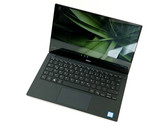
Recensione breve del Portatile Dell XPS 13 9360 (FHD, i7, Iris)
Intel Core i7-7560U | Intel Iris Plus Graphics 640 | 13.30" | 1.2 kg
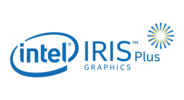
La Intel Iris Plus Graphics 640 (GT3e) è una scheda grafica per processori per i modelli Kaby Lake annunciata nel gennaio 2017. Come successore della Intel Iris Graphics 540 (Skylake), la Iris Plus Graphics 640 è utilizzata per i modelli ULV da 15 watt ed è dotata di 64 MB di cache eDRAM. Non dovrebbero esserci grandi cambiamenti rispetto alla Iris Graphics 540.
La cosiddetta versione GT3e della GPU Kaby Lake ha ancora 48 Execution Units (EUs), che possono arrivare fino a 1050 MHz a seconda del modello. Oltre alla cache eDRAM, la Iris 640 può anche accedere alla memoria di sistema (2x 64 Bit DDR3L-1600/LPDDR3-1866/DDR4-2400) tramite interfaccia del processore.
Rispetto all'Iris Plus 650 dei modelli da 28 watt, l'Iris 640 ha solo un clock massimo leggermente inferiore così come il TDP inferiore, quindi l'utilizzo del potenziale Turbo Boost dovrebbe essere peggiore.
Prestazioni
Le prestazioni esatte della Iris Plus Graphics 640 dipendono dal modello di CPU, perché il clock massimo così come la dimensione della cache L3 possono differire un po'. Anche la memoria di sistema (DDR3/DDR4) influenzerà le prestazioni.
I chip più veloci sono i modelli Core i7 ad alto clock come il Core i7-7660U. A seconda del gioco, l'Iris Plus 640 sarà probabilmente simile al modello precedente a metà strada tra una GeForce 920M dedicata e una GeForce 940M e di solito è limitato a impostazioni basse nei giochi moderni.
Caratteristiche
Il motore video rielaborato ora supporta pienamente la decodifica hardware dei video H.265/HEVC. Contrariamente a Skylake, tuttavia, Kaby Lake può ora decodificare anche H.265/HEVC Main 10 con una profondità di colore a 10 bit così come il codec VP9 di Google. L'uscita video è possibile tramite DP 1.2/eDP 1.3 (fino a 3840 x 2160 @60 Hz), mentre HDMI è supportato anche nel vecchio standard 1.4a. Un'uscita HDMI 2.0 può essere aggiunta tramite convertitore da DisplayPort. La GPU può pilotare fino a tre display simultaneamente.
Consumo energetico
La Iris Plus Graphics 640 è usata per processori ULV da 15 Watt e quindi per notebook e Ultrabook sottili.
Gen. 9.5 Serie
| ||||||||||||||||||||||||||||||||||||||||
| Nome in codice | Kaby Lake GT3e | |||||||||||||||||||||||||||||||||||||||
| Architettura | Gen. 9.5 Kaby Lake | |||||||||||||||||||||||||||||||||||||||
| Pipelines | 48 - unified | |||||||||||||||||||||||||||||||||||||||
| Velocità del core | 300 - 1050 (Boost) MHz | |||||||||||||||||||||||||||||||||||||||
| Larghezza del bus di memoria | 64/128 Bit | |||||||||||||||||||||||||||||||||||||||
| Tipo di memoria | DDR3/DDR4 | |||||||||||||||||||||||||||||||||||||||
| Max. quantità di memoria | 64 MB | |||||||||||||||||||||||||||||||||||||||
| Memoria condivisa | si | |||||||||||||||||||||||||||||||||||||||
| API | DirectX 12_1, OpenGL 4.4 | |||||||||||||||||||||||||||||||||||||||
| tecnologia | 14 nm | |||||||||||||||||||||||||||||||||||||||
| Caratteristiche | QuickSync | |||||||||||||||||||||||||||||||||||||||
| Data dell'annuncio | 03.01.2017 | |||||||||||||||||||||||||||||||||||||||
| ||||||||||||||||||||||||
I seguenti benchmarks deirivano dai benchmarks dei portatili recensiti. Le prestazioni dipendono dalla scheda grafica utilizzata, dal clock rate, dal processore, dai settaggi di sistema, dai drivers, e dai sistemi operativi. Quindi i risultati non sono rappresentativi per i portatili con questa GPU. Per informazioni dettagliate sui risultati del benchmark, cliccate sul numero di fps.























| basso | medio | alto | ultra | QHD | 4K | |
|---|---|---|---|---|---|---|
| The Evil Within 2 | 13.8 | |||||
| Middle-earth: Shadow of War | 28 | |||||
| FIFA 18 | 69.5 | 38.8 | ||||
| F1 2017 | 36 | 15 | ||||
| Playerunknown's Battlegrounds (PUBG) | 22.9 | |||||
| Team Fortress 2 | 99 | 48 | 31.8 | |||
| Dirt 4 | 27.5 | |||||
| Rocket League | 92 | 40 | 28 | |||
| Prey | 43 | 18 | 14.8 | |||
| Warhammer 40.000: Dawn of War III | 33.8 | |||||
| Mass Effect Andromeda | 20.4 | |||||
| Ghost Recon Wildlands | 16 | |||||
| For Honor | 32 | 12 | ||||
| Titanfall 2 | 44 | 31.4 | 22.9 | |||
| Farming Simulator 17 | 121 | 91 | 31.6 | 17.8 | ||
| Battlefield 1 | 31 | 22 | 10 | |||
| Deus Ex Mankind Divided | 20.2 | |||||
| Overwatch | 60 | 39 | 27 | 19.5 | ||
| The Division | 24.9 | |||||
| Far Cry Primal | 28 | 13 | ||||
| Rise of the Tomb Raider | 25 | 18 | 9.1 | |||
| Rainbow Six Siege | 52 | 31 | 17 | 14.2 | ||
| Star Wars Battlefront | 44.7 | 26.2 | 12.9 | |||
| Dota 2 Reborn | 80 | 59 | 29 | 21 | ||
| The Witcher 3 | 19 | 13.4 | 4 | |||
| GTA V | 56.7 | 28.9 | 11.8 | |||
| Sims 4 | 28.6 | 21 | ||||
| Battlefield 4 | 52 | 36 | 27 | 9 | ||
| BioShock Infinite | 65 | 43 | 36 | 12 | ||
| Tomb Raider | 118 | 61 | 42 | 19 | ||
| Diablo III | 35.2 | |||||
| World of Warcraft | 28.5 | |||||
| basso | medio | alto | ultra | QHD | 4K | < 30 fps < 60 fps < 120 fps ≥ 120 fps | 10 10 6 1 | 10 8 3 | 13 4 | 9 2 | | |
Per conoscere altri giochi che potrebbero essere utilizzabili e per una lista completa di tutti i giochi e delle schede grafiche visitate la nostra Gaming List

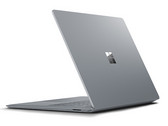
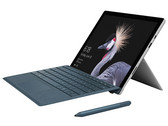
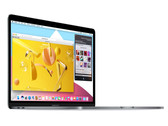
HP Spectre x2 12-c052nr: Intel Core i7-7560U, 12.30", 1.1 kg
Recensioni esterne » HP Spectre x2 12-c052nr
Microsoft Surface Laptop i7: Intel Core i7-7660U, 13.50", 1.3 kg
Recensioni esterne » Microsoft Surface Laptop i7
HP Spectre x2 12-c000nf: Intel Core i5-7260U, 12.30", 1.2 kg
Recensioni esterne » HP Spectre x2 12-c000nf
HP Spectre x2 12-C080no: Intel Core i5-7260U, 12.30", 1.2 kg
Recensioni esterne » HP Spectre x2 12-C080no
HP Spectre x2 12-c012dx: Intel Core i7-7560U, 12.30", 1.1 kg
Recensioni esterne » HP Spectre x2 12-c012dx
Apple MacBook Pro 13 2017: Intel Core i5-7360U, 13.30", 1.4 kg
Recensioni esterne » Apple MacBook Pro 13 2017
Microsoft Surface Pro (2017) i7: Intel Core i7-7660U, 12.30", 1.1 kg
Recensioni esterne » Microsoft Surface Pro (2017) i7
HP Spectre x2 12-C001NF: Intel Core i5-7260U, 12.30", 1.1 kg
Recensioni esterne » HP Spectre x2 12-C001NF
Posizione approssimativa dell'adattatore grafico
I nostri Top 10
» Top 10 Portatili Multimedia
» Top 10 Portatili Gaming
» Top 10 Portatili Gaming Leggeri
» Top 10 Portatili da Ufficio e Business economici
» Top 10 Portatili Premium da Ufficio/Business
» Top 10 Portatili sotto i 300 Euro
» Top 10 Portatili sotto i 500 Euro
» Top 10 dei Portatili Workstation
» Top 10 Subnotebooks
» Top 10 Ultrabooks
» Top 10 Convertibili
» Top 10 Tablets
» Top 10 Tablets Windows
» Top 10 Smartphones